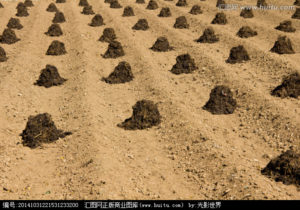Acid and Alkali Fertilizer
Best crm Twin screw extruder fertilizer machinery Best automatic belt conveyor Bagging machine
Fertilizers are same with soils which are acid and alkaline. In this time, we should have targeted selection of application of acid and alkali fertilizers which can not only reduce the loss of fertilizer, but also improve nutrient utilization and output.
Why there is acid and alkali fertilizer?
Soil can be divided into two kinds: acid and alkaline, because  the soil solution contains hydrogen ions and hydroxide ions. When the hydrogen ions content is more than hydroxide ions, the soil was acidic, otherwise the soil is alkaline, at the same time, if the amount of hydrogen ions and hydroxide ions is same, the soil was neutral. Similarly, when the fertilizer is applied to the soil, anions and cations are produced and the number of cations and cations are absorbed by the crops is not equal. When the soils are acidic, plants will absorb more cations than the anions, and the applied fertilizers are called physiological acid fertilizers. When the soil are alkaline, plants will absorb more anions than cations, and the applied fertilizer is called physiological alkaline fertilizer. When the soil is neutral, plants will absorb the same number anions and cations and there is no ions residue in soil, the applied fertilizer is called the physiological neutral fertilizer.
the soil solution contains hydrogen ions and hydroxide ions. When the hydrogen ions content is more than hydroxide ions, the soil was acidic, otherwise the soil is alkaline, at the same time, if the amount of hydrogen ions and hydroxide ions is same, the soil was neutral. Similarly, when the fertilizer is applied to the soil, anions and cations are produced and the number of cations and cations are absorbed by the crops is not equal. When the soils are acidic, plants will absorb more cations than the anions, and the applied fertilizers are called physiological acid fertilizers. When the soil are alkaline, plants will absorb more anions than cations, and the applied fertilizer is called physiological alkaline fertilizer. When the soil is neutral, plants will absorb the same number anions and cations and there is no ions residue in soil, the applied fertilizer is called the physiological neutral fertilizer.
Factors affect soil pH
Soil pH can directly affect the effectiveness of nutrients in the soil, and also can affect the microbial activity in soil which will indirectly affect the soil nutrient utilization and turnover. In acidic soil, the effective phosphorus will have chemical reaction with iron and aluminium to generate iron phosphate and aluminum phosphate which will reduce the soil effectiveness. Exchangeable potassium, calcium, magnesium and other ions easily replaced by hydrogen will loss with water.
In alkaline soil, phosphorus is easy to combine with calcium to produce insoluble calcium phosphate salts, which will reduce the effectiveness of phosphorus.The effectiveness of many trace elements such as boron, manganese and molybdenum will be greatly reduced, leading to crop deficiency and physiological diseases of crop.
How to use acid and alkaline fertilizer
Generally, we can select the fertilizer types according to the soil pH and the degree of crop sensitivity. Alfalfa, sunflower, beet are plants resist alkali; oats, buckwheat, potatoes, sweet potatoes are plants resist acid. Under neutral conditions, the nutrients are usually the most effective. Therefore, follow the rules of alkaline fertilizers and acidic fertilizers application is necessary.
types according to the soil pH and the degree of crop sensitivity. Alfalfa, sunflower, beet are plants resist alkali; oats, buckwheat, potatoes, sweet potatoes are plants resist acid. Under neutral conditions, the nutrients are usually the most effective. Therefore, follow the rules of alkaline fertilizers and acidic fertilizers application is necessary.
Acid soil should be applied physiological alkaline fertilizer, such as sodium nitrate, potassium nitrate, nitro compound fertilizer, you can also applied with organic fertilizer and lime, to reduce the effect of soil acidification; alkaline soil should use physiological acid fertilizer, such as ammonium sulfate , Ammonium chloride, etc., but for salt and alkali soil, you should not apply ammonium chloride and sodium nitrate, in order to avoid the harm caused by sodium and chloride ions.
The article is quoted from: http://www.fert.cn/news/2017/09/15/083217315901.shtml
Previous: Adjust Organic Fertilizer Measures to Local Conditions
